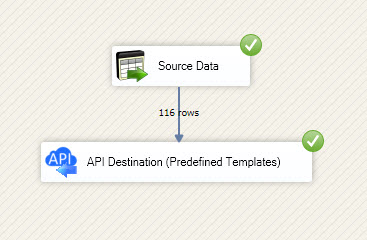Writing data in SSIS
In this section we will learn how to configure and use Cosmos DB Connector in the API Destination to write data to Cosmos DB.
Video tutorial
This video covers following and more so watch carefully. After watching this video follow the steps described in this article.
- How to download SSIS PowerPack for Cosmos DB integration in SSIS
- How to configure connection for Cosmos DB
- How to write or lookup data to Cosmos DB
- Features about SSIS API Destination
- Using Cosmos DB Connector in SSIS
Step-by-step instructions
In upper section we learned how to read data, now in this section we will learn how to configure Cosmos DB in the API Source to POST data to the Cosmos DB.
-
Read the data from the source, being any desired source component. In example we will use ZappySys Dummy Data Source component.
-
From the SSIS Toolbox drag and drop API Destination (Predefined Templates) on the Data Flow Designer surface and connect source component with it, and double click to edit it.
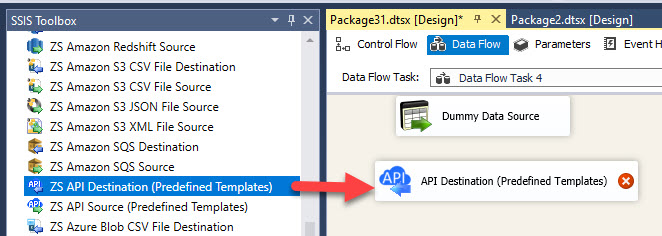
-
Select New Connection to create a new connection:
API Destination - Cosmos DBConnect to your Azure Cosmos DB databases to read, query, create, update, and delete documents and more!
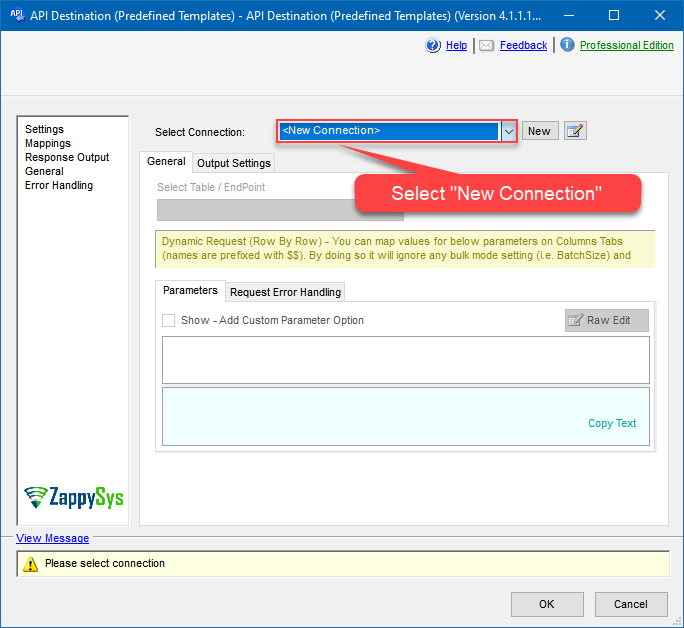
-
Use a preinstalled Cosmos DB Connector from Popular Connector List or press Search Online radio button to download Cosmos DB Connector. Once downloaded simply use it in the configuration:
Cosmos DB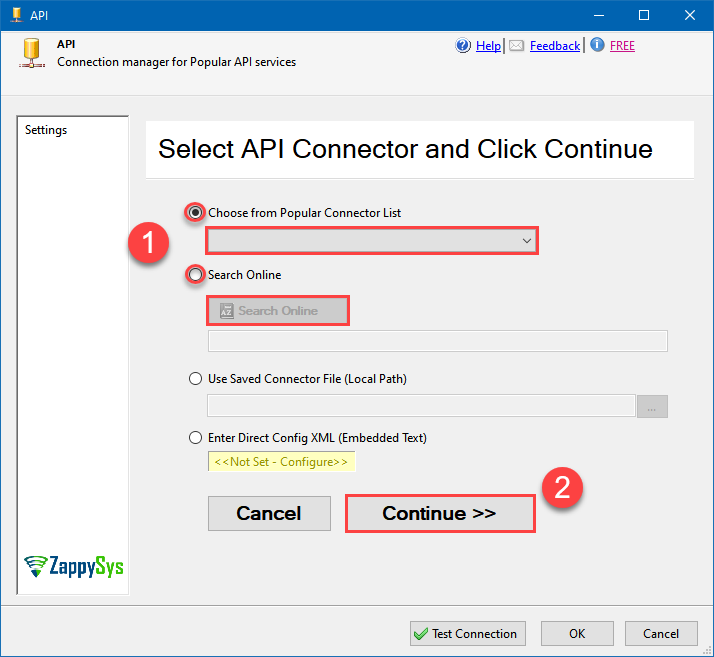
-
Proceed with selecting the desired Authentication Type. Then select API Base URL (in most cases default one is the right one). Finally, fill in all the required parameters and set optional parameters if needed. You may press a link Steps to Configure which will help set certain parameters. More info is available in Authentication section.
Cosmos DB authentication
Connecting to your Azure Cosmos DB data requires you to authenticate your REST API access. Follow the instructions below:- Go to your Azure portal homepage: https://portal.azure.com/.
- In the search bar at the top of the homepage, enter Azure Cosmos DB. In the dropdown that appears, select Azure Cosmos DB.
- Click on the name of the database account you want to connect to (also copy and paste the name of the database account for later use).
-
On the next page where you can see all of the database account information, look along the left side and select Keys:
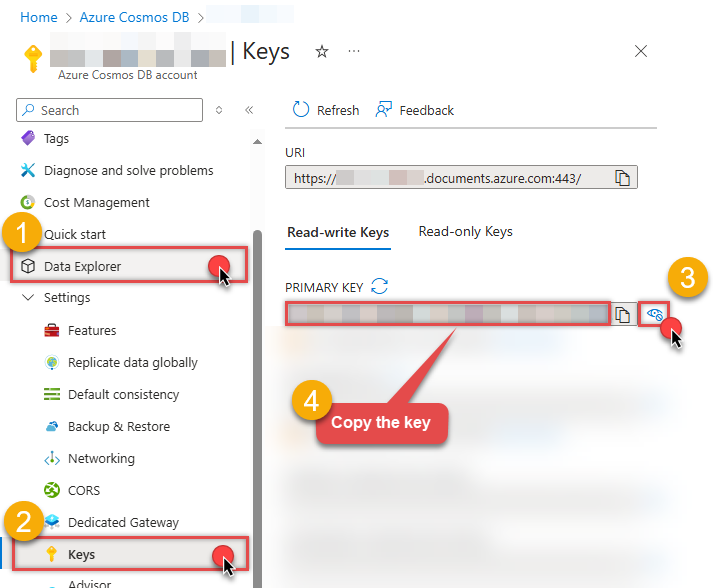
- On the Keys page, you will have two tabs: Read-write Keys and Read-only Keys. If you are going to write data to your database, you need to remain on the Read-write Keys tab. If you are only going to read data from your database, you should select the Read-only Keys tab.
- On the Keys page, copy the PRIMARY KEY value and paste it somewhere for later use (the SECONDARY KEY value may also be copied and used).
- Now go to SSIS package or ODBC data source and use this PRIMARY KEY in API Key authentication configuration.
- Enter the primary or secondary key you recorded in step 6 into the Primary or Secondary Key field.
- Then enter the database account you recorded in step 3 into the Database Account field.
- Next, enter or select the default database you want to connect to using the Defualt Database field.
- Continue by entering or selecting the default table (i.e. container/collection) you want to connect to using the Default Table (Container/Collection) field.
- Select the Test Connection button at the bottom of the window to verify proper connectivity with your Azure Devops account.
- If the connection test succeeds, select OK.
- Done! Now you are ready to use Asana Connector!
API Connection Manager configuration
Just perform these simple steps to finish authentication configuration:
-
Set Authentication Type to
API Key [Http] - Optional step. Modify API Base URL if needed (in most cases default will work).
- Fill in all the required parameters and set optional parameters if needed.
- Finally, hit OK button:
Cosmos DBAPI Key [Http]https://[$Account$].documents.azure.comRequired Parameters Primary or Secondary Key Fill-in the parameter... Account Name (Case-Sensitive) Fill-in the parameter... Database Name (keep blank to use default) Case-Sensitive Fill-in the parameter... API Version Fill-in the parameter... Optional Parameters Default Table (needed to invoke #DirectSQL) 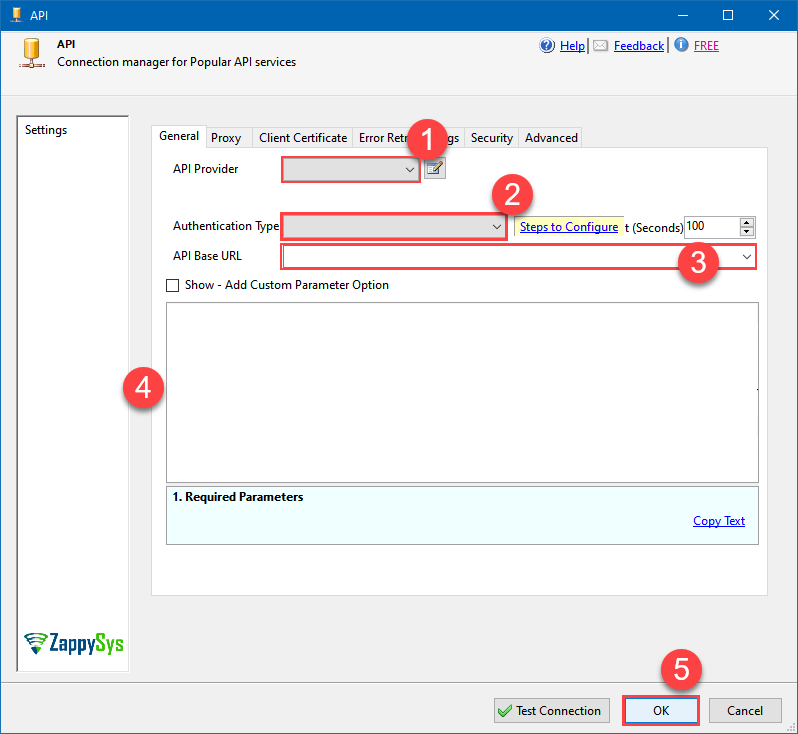
-
Select the desired endpoint, change/pass the properties values, and go to the Mappings tab to map the columns.
API Destination - Cosmos DBConnect to your Azure Cosmos DB databases to read, query, create, update, and delete documents and more!
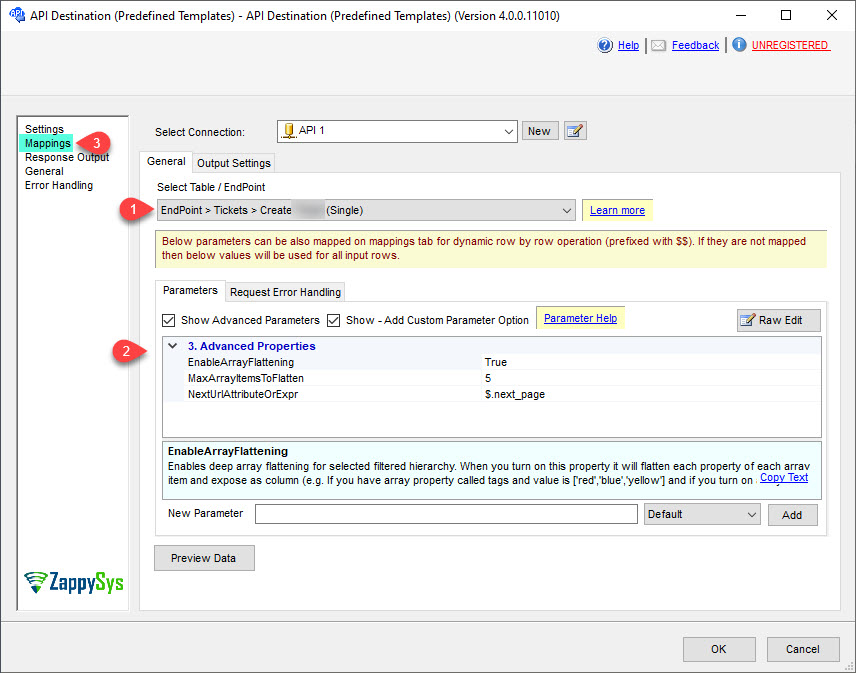
-
Finally, map the desired columns:
API Destination - Cosmos DBConnect to your Azure Cosmos DB databases to read, query, create, update, and delete documents and more!
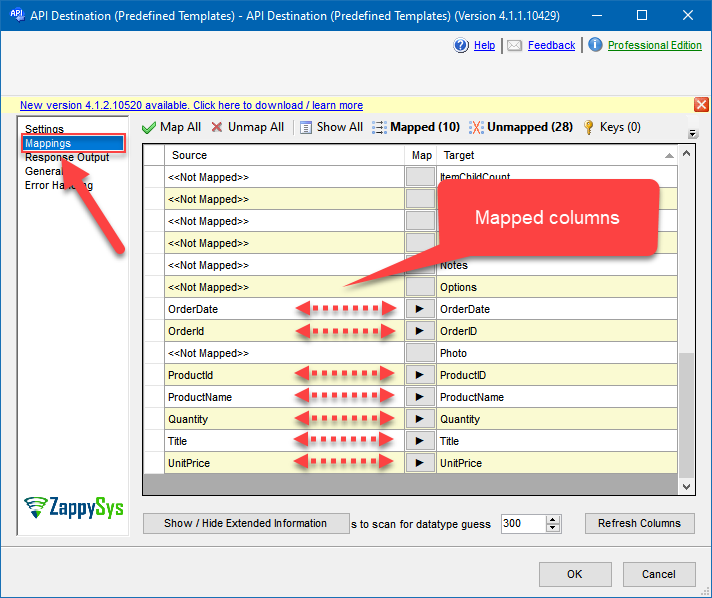
-
That's it; we successfully configured the POST API Call. In a few clicks we configured the Cosmos DB API call using ZappySys Cosmos DB Connector
